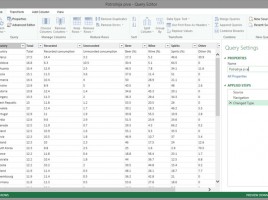
Previous and subsequent periods
If we want to carry out calculations in previous or the next period in relation to the current date, should use “PREVIOUS” and “NEXT” Time Intelligence function. They allow aggregation of data, usually the column that contains the quantity or amount of sales, compared to the previous year, quarter, month or day, as well as in relation to the next year, quarter, month or day. In the example below you will see how to utilize this class of DAX functions.




